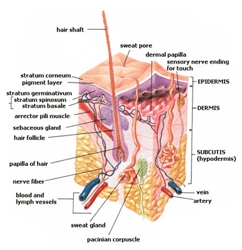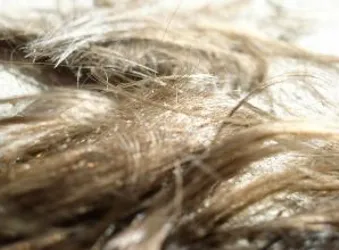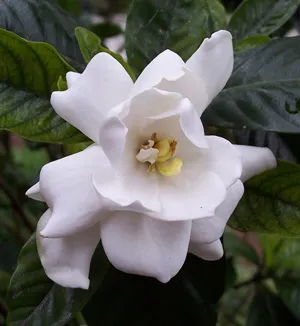
Hair Database Filled With Hair Samples
Hair Database Filled With Hair Samples University of Ottawa scientists Gilles St-Jean and Michelle Chartrand, an environmental chemist, are constructing a pan-Canadian database filled with all the amazing information which can be gained by analyzing hair samples.
University of Ottawa scientists Gilles St-Jean and Michelle Chartrand, an environmental chemist, are constructing a pan-Canadian database filled with all the amazing information which can be gained by analyzing hair samples.
The scientists have spent the past three years collecting and grinding up hair samples to create the database that they hope will help police detectives solve unidentified bodies in cold cases. As part of their research they have been travelling the country and taking hair samples from long-time residents.
The hair database project is being funded by the Centre for Security Science, a joint endeavor between Defense Research and Development Canada and Public Safety Canada.
Why Hair?
Hair is important because it can peg where a person has been living and what they've been eating. Since hair grows approximately 6 inches a year, the longer the hair that is added, the more information that can be gathered from the hair analysis. The length of time scientists can go back in analyzing the hair depends on the total length of the hair.
Chartrand's team uses something called "isotope analysis," a chemical analysis method that looks for clues among three key elements in hair: carbon, hydrogen and nitrogen. A hair's carbon and nitrogen can offer glimpses into the type of food a person has eaten. "It can also tell us your particular protein intake, so it can the difference between a vegetarian, a vegan and an omnivore," she explained.
 Analyzing the isotopes in the hydrogen in a strand of hair can offer a clue about where someone has lived. "The way that this works is that water is different in different regions. So it varies in terms of its isotope profile -- so the hydrogen that's in the water," she says.
Analyzing the isotopes in the hydrogen in a strand of hair can offer a clue about where someone has lived. "The way that this works is that water is different in different regions. So it varies in terms of its isotope profile -- so the hydrogen that's in the water," she says.
The isotopes in some water are heavier than others, and their proportions can vary depending on the latitude and how far away one is from the equator or the ocean. Because people tend to drink their local water, "the signals we find in local water reflects what we find in people's hair," Chartrand explains.
Color Treated Hair Does Not Make A Difference
Chartrand says many people ask whether dyed hair can skew the analysis. Surprisingly, most times it doesn't. Her team has conducted a small study in which they analyzed the differences between dyed hair and undyed hair. "What we found was that for the isotope analysis, dyeing hair does not have a significant on the results. Dyed hair and un-dyed hair give very similar results. That was very encouraging for us because a lot of people color their hair," she said.
Chartrand says it's likely that hair dye simply stays on the shaft of the hair and doesn't penetrate it, so doesn't interfere with the hair's chemistry. Henna-dyed hair, on the other hand, is a different story; that gives results that are completely different from hair without henna.
Mapping Out Hydrogen Isotopes
 Chartrand has been building a database of those signals for the past three years, mapping out where certain hydrogen isotopes are found and where they aren't. "So we can sample their hair and analyze it and say, 'Okay, this is the kind of signal we can expect from someone who lives in, for example, Ottawa'," she says.
Chartrand has been building a database of those signals for the past three years, mapping out where certain hydrogen isotopes are found and where they aren't. "So we can sample their hair and analyze it and say, 'Okay, this is the kind of signal we can expect from someone who lives in, for example, Ottawa'," she says.
"So when there's an identified body that's found, we can analyze their hair and compare it against our database to give us clues as to where that person has been spending most of their recent time."
Database Of Soils, Quartz Grains And Pollen
The RCMP's Forensic Laboratory Services are doing their part too, by including trace elements from soils and quartz grains collected during the research team's sampling work. And a group at the Universite de Montréal is building the first modern pollen database from the sampling efforts as well.
At the moment, all the data is housed with each of those groups and at the University of Ottawa, but they will all be brought together in 2012, when the full database is established.
More Information
Please follow me on Twitter at: http://Twitter.com/HairBoutique. I look forward to meeting new people from all walks of Twitter and learning from their Tweets. Visit us at Hairboutique.com located at: http://www.HairBoutique.com, on Facebook, MySpace and YouTube.
Thank you for visiting us at The HairBoutique Blog and for leaving your comments. They are very much appreciated. We apologize in advance but must remove any direct advertisements or solicitations.Social Media Network Information
Please follow us on Twitter at: https://Twitter.com/HairBoutique. I look forward to meeting new people from all walks of Twitter and learning from their Tweets.
















